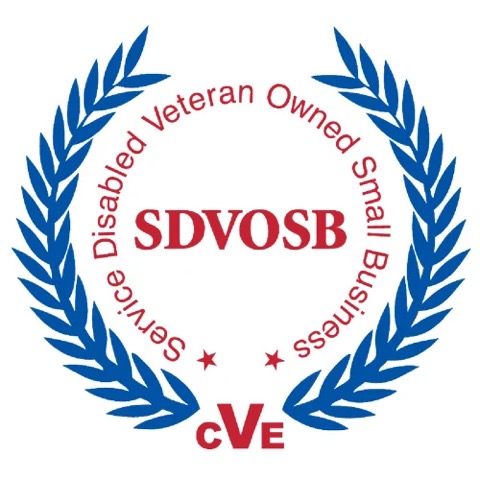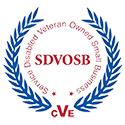OSHA Resources
2024 OSHA Top 10 Violations (and How to Avoid Them with Razer Safety)
If you’re serious about workplace safety and OSHA compliance, knowing the most frequently cited OSHA standardsin 2024 is your first line of defense. Thousands of businesses face hefty fines and serious incidents every year due to violations that are completely preventable.
At Razer Safety, we help companies stay ahead of inspections and create safer, compliant workplaces with industry-leading training, audits, and compliance tools.
Top 10 OSHA Violations of 2024
-
Fall Protection – General Requirements (29 CFR 1926.501) – 6,307 violations
Falls remain the #1 cause of fatalities in construction. Razer Safety offers customizable fall protection training programs and site assessments to keep your crews safe and compliant. -
Hazard Communication (29 CFR 1910.1200) – 2,888 violations
Are your Safety Data Sheets and labeling systems up to date? Razer Safety’s HazCom program reviews help ensure your chemical handling meets OSHA’s latest standards. -
Ladders (29 CFR 1926.1053) – 2,573 violations
Improper ladder use continues to be a top hazard. Ask about our ladder safety training modules and jobsite audits to prevent common missteps. -
Respiratory Protection (29 CFR 1910.134) – 2,470 violations
From N95 fit-testing to full respiratory programs, Razer Safety helps employers build OSHA-compliant respiratory protection plans. -
Lockout/Tagout (LOTO) (29 CFR 1910.147) – 2,443 violations
We help you implement LOTO procedures and employee training that prevent injuries during machine servicing. -
Powered Industrial Trucks (Forklifts) (29 CFR 1910.178) – 2,248 violations
Train your operators the right way. Razer Safety provides hands-on forklift certification and safety refreshers. -
Fall Protection – Training Requirements (29 CFR 1926.503) – 2,050 violations
It’s not enough to have the equipment—your team needs the knowledge. Our OSHA-authorized trainers deliver engaging, job-specific fall safety courses. -
Scaffolding (29 CFR 1926.451) – 1,873 violations
We conduct on-site scaffolding inspections and compliance checklists so your workers can build with confidence. -
Eye and Face Protection (29 CFR 1926.102) – 1,814 violations
Razer Safety’s PPE assessments and training make sure your workers are equipped—and using protection correctly. -
Machine Guarding (29 CFR 1910.212) – 1,541 violations
Let us help you audit and upgrade your guarding systems to reduce risk and avoid citations.
Stay Ahead of OSHA with Razer Safety
Want to avoid these violations at your facility? We specialize in:
- OSHA 10/30 Training (Online & On-Site)
- Safety Program Development
- Site-Specific Risk Assessments
- Toolbox Talks & Safety Meetings
- Mock OSHA Inspections
Contact Razer Safety today for a consultation or call 618-443-4276 to learn more.
The Bottom 5
Just as the top 5 OSHA standards have remained the same but shifted positions, so have the bottom five standards on the OSHA's Top 10 list.
The Powered Industrial Trucks standard has moved up two spots on the list and deals with the operation design, maintenance, and training of mobile equipment like forklifts. Perhaps this increase reflects the labor crunch many companies, especially those in logistics and warehousing, have felt over the past year as they try to fulfill the demand for goods while short-staffed.
These shortages may push some to cut corners regarding proper employee training, inspections, and maintenance while hiring less skilled workers to operate the equipment. As a result, OSHA inspectors may find more violations than they would otherwise.
Impact on Workers, Business and Profit
Employers that want to reduce injury in accident rates and avoid potentially costly regulatory fines must take this list seriously and see if it illuminates any of their safety and health programs' shortcomings.
If an OSHA inspector shows up for a surprise inspection, these top 10 standards will likely be at the top of their mind and something they will look for at your facility. Reading and reviewing these top 10 standards for comprehension and how they might apply to your workplace is a perfect place to start to ensure your organization isn't caught off guard.
The Need for Training and Prevention
What are some of the most important things your company needs to focus on to ensure you don't get hit with one of these most cited regulations?
Safety audits are one of the essential safety and health program tools. Audits help you identify hazards in your workplace so that you can proactively manage and eliminate them before they can turn into workplace injuries or accidents.
Different people see different hazards, and something you might miss may be evident to another person with different experiences. That's why it is helpful to have Razer Safety and Health perform periodic workplace audits and mentor your team members on identifying hazards.
OSHA requires that companies create written safety programs and periodically update and review them. Razer Safety and Health can audit your organization's current safety and health plans and procedures to ensure they include the requirements established by the top 10 standards.
Finally, an essential component of workplace safety and compliance is training employees to recognize and mitigate the hazards they are likely to encounter. Therefore, audit your current training to identify gaps related to the OSHA's top 10 list and create a plan to fill those gaps.
Make sure that you are proactive when it comes to training and staying on top of it. The longer you wait to conduct training, the more likely your workers are to be involved in an accident, and OSHA is to show up on-site and realize that you have not been conducting the mandatory training.
When should I report accidents to OSHA?
You should report accidents to the Occupational Safety and Health Administration (OSHA) if they meet the criteria for a "serious injury." Under OSHA regulations, a serious injury is defined as one that results in:
- Death
- Hospitalization for more than 24 hours for other than medical observation
- Loss of an eye
- Loss of a body part
- Significant disfigurement
- Fractured or compressed vertebra
- A punctured eardrum
- Permanent hearing loss
- Loss of consciousness
- Diagnosis of a serious illness (e.g., cancer, heart disease) that is directly related to workplace exposure)
After a workplace accident what questions should I ask?
If you're involved in a workplace accident, it's important to take the following steps to ensure that you get the help you need and that the incident is properly documented:
- Seek medical attention if necessary: If you're injured, it's important to get prompt medical attention. This not only helps you get the care you need but also creates a record of the injury.
- Report the accident: Report the accident to your supervisor or employer as soon as possible. This will help ensure that the incident is properly documented and that the necessary steps are taken to prevent similar accidents from happening in the future.
- Gather information: If you're able to do so, gather information about the accident while it's still fresh in your mind. This might include taking photos of the scene, getting the names and contact information of witnesses, and making notes about what happened.
- Ask the following questions:
- What caused the accident?
- Were there any safety violations or hazards that contributed to the accident?
- Was proper safety equipment or personal protective equipment provided and used?
- Were there any procedural or training deficiencies that contributed to the accident?
- Will there be an investigation into the accident?
- What is the next step in the process, and what kind of support and resources will be provided?
By asking these questions, you can help ensure that the root cause of the accident is identified and addressed. That measures are taken to prevent similar accidents from happening in the future and have information available when OHSA makes follow up inspection after accident report.
If I am an employer what questions should I ask after accident?
As an employer, it's important to take a thorough and comprehensive approach to investigating workplace accidents to ensure that the root cause is identified and addressed. When investigating, it's important to ask the following questions.
By asking these questions and gathering as much information as possible about the accident, you can help ensure that you have a complete and accurate understanding of what happened and what can be done to prevent similar accidents from happening in the future. As employer you will be prepared for OSHA Visit following the report of an accident.
- What caused the accident?
- Were there any safety violations or hazards that contributed to the accident?
- Was proper safety equipment or personal protective equipment provided and used?
- Were there any procedural or training deficiencies that contributed to the accident?
- Who was involved in the accident?
- Who witnessed the accident?
- Who provided first aid or medical attention?
- Who oversaw the work area at the time of the accident?
- What was the sequence of events leading up to the accident?
- What were the conditions at the time of the accident (e.g., weather, lighting, equipment, etc.)?
- Were there any warning signs or indications that the accident was about to occur?
- Was the work being performed within the scope of the employee's job responsibilities?
- What steps were taken immediately following the accident?
- Was first aid provided?
- Was the proper medical attention sought?
- Was the scene secured to preserve evidence?
OSHA General Duty Clause
The OSHA (Occupational Safety and Health Administration) General Duty Clause is a provision in the Occupational Safety and Health Act of 1970 that requires employers to provide a safe and healthful workplace for their employees. Specifically, the General Duty Clause states that employers must furnish "a place of employment which is free from recognized hazards that are causing or are likely to cause death or serious physical harm to his employees."
The General Duty Clause is often used by OSHA to cite employers for violations of safety and health standards that do not have a specific OSHA regulation. For example, if there is a hazard in the workplace that is not addressed by an OSHA standard, OSHA can use the General Duty Clause to cite the employer for failing to provide a safe workplace.
To use the General Duty Clause, OSHA must establish that the employer:
- Had a duty to protect employees from a hazard.
- Knew or should have known of the hazard.
- Failed to take reasonable steps to eliminate or reduce the hazard.
- The hazard was causing or likely to cause death or serious physical harm to employees.
Employers can prevent violations of the General Duty Clause by identifying and addressing potential hazards in the workplace, providing adequate training to employees, and maintaining a culture of safety.
By using Razer Safety and Health, LLC to provide safety audits or “mock” OSHA Inspection employers can identify and avoid potential hazards that may result in a citation, violation, and penalties.
Testimonials
"Razer's St. Louis Area Office and National Office presentations to OSHA were both well prepared for and professionally delivered. His background with OSHA, made his presence at these meetings, a valuable asset for the possible acceptance by OSHA of the CDC/HBA Fall Prevention Study Proposal. Thanks,"
Barry Stelzer
-Carpenters' District Council of Greater St. Louis Vicinity-
-The Carpenters' Union Builds Our Community-
"THANK YOU. Chet was a pleasure to work with Chet was very professional, and I do feel much better about our OSHA logs and our records. We will be continuing to use Razer Safety for our ongoing safety training. Thanks again."
Chris Niebrugge
-Niebrugge Lumber-
"Razer Safety has been vital in helping us with all aspects of our safety training, programs and policies. The knowledge Mr. Razer demonstrates in safety policy, training, implementation, and OSHA compliance have been instrumental in making RCI the best we can be."
Colby Robertson
-President, Robertson Contractors, Inc.-




